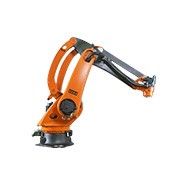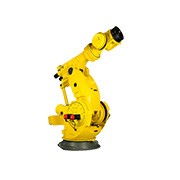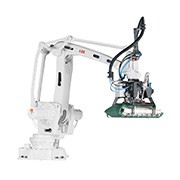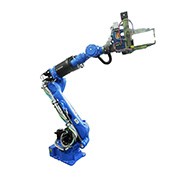Today, with the advent of Industry 4.0, machine vision technology is gradually playing a very important role in industrial automation. The continuous innovation of machine vision technology has promoted the progress of industries such as industrial automation, smart security and artificial intelligence. The development of areas where this technology can be applied also brings more development potential and opportunities.
Everyone says that 80% of human perception of outside information is obtained through the eyes, and the amount of information contained in images is the largest. Then the emergence of machine vision technology is to equip machine equipment with a sense of the outside world, so that the machine has a human-like visual function, so as to achieve various detection, judgment, recognition, measurement and other functions.
Today, let's feel the charm of machine vision technology.
Five typical architectures of machine vision:
illumination
I still remember that when I was attending a conference on machine vision technology, a big technical cow specifically emphasized the importance of lighting in machine vision. It is understood that lighting is an important factor affecting the input of machine vision systems, and it directly affects the quality of the input data and the application effect.
The light source can be divided into visible light and invisible light. Several commonly used visible light sources are white light, fluorescent light, mercury light and sodium light. The disadvantage of visible light is that the light energy cannot be stabilized. How to keep the light energy stable to a certain extent is an urgent problem that needs to be solved in practice. On the other hand, ambient light may affect the quality of the image, so the method of adding a protective screen can be used to reduce the impact of ambient light.
The lighting system can be divided into: back lighting, forward lighting, structured light and stroboscopic lighting. Among them, back lighting is where the measured object is placed between the light source and the camera. Its advantage is that it can obtain a high-contrast image. Forward lighting is where the light source and camera are located on the same side of the object under test, which is easy to install. Structured light illumination is to project gratings or linear light sources onto the test object, and demodulate the three-dimensional information of the test object based on the distortion generated by them. Strobe lighting is to illuminate high-frequency light pulses on an object, and the camera requires synchronization with the light source.
Lens
The lens is equivalent to the existence of human eyeballs. It is mainly responsible for the modulation of light beams and the completion of signal transmission in machine vision systems. It is understood that most of the lenses on the market so far can meet the needs of machine vision applications, but more professional machine vision systems may require customized lenses and coatings. Fortunately, many lens manufacturers with in-house production capabilities are ready to customize lenses to meet these application needs. Of course, these custom lenses can be expensive, so they are usually only used in specific imaging systems that are not cost sensitive (such as military applications) or in production lines for high-volume consumer products.
industrial camera
The most essential function of industrial cameras in machine vision systems is to convert optical signals into electrical signals. Compared with ordinary cameras, it has higher transmission power, anti-interference power and stable imaging capabilities. There are various classifications according to different standards: according to the output signal method, they can be divided into analog industrial cameras and digital industrial cameras; according to different chip types, they can be divided into CCD industrial cameras and CMOS industrial cameras.
Frame grabber
Although the image capture card is only a component of a complete machine vision system, it plays a very important role and directly determines the interface of the camera: black and white, color, analog, digital, etc. More typical are PCI capture cards, 1394 capture cards, VGA capture cards and GigE Gigabit network capture cards. These capture cards have built-in multiplexers that can connect multiple cameras and capture multiple channels of information simultaneously.
Machine vision software
Machine vision software is a key component of automated processing in machine vision systems. According to specific application requirements, secondary development of software packages can automatically complete image acquisition, display, storage and processing. It is transmitted to the dedicated image processing software in the early stage, and is converted into digital signals according to pixel distribution, brightness, color and other information. Machine vision software then performs various operations on these signals to extract the characteristics of the target, and then controls the scene according to the discrimination results Device action.
Five common application areas:
Machine vision can be said to be the soul window of industrial automation systems. From object / bar code identification, product detection, appearance measurement to robot arm / drive equipment positioning, all are the stages that machine vision technology can play. Therefore, its application range is very It is extensive and the industry application fields are even more dazzling.
Image recognition applications
Image recognition is the use of machine vision to process, analyze, and understand images to identify targets and objects in a variety of different modes. The most typical application of image recognition in the field of machine vision industry is the identification of two-dimensional codes. Two-dimensional codes are one of the most common barcodes that we usually use. Store a large amount of data information in this small two-dimensional code, track and manage the product through the barcode, and the machine vision system can easily identify and read the barcodes on various material surfaces, which greatly improves the efficiency of modern production .
Image detection applications
Inspection is one of the most important applications in the field of machine vision industry. Almost all products need to be inspected. Manual inspection has many disadvantages. The accuracy of manual inspection is low. If you work for a long time, the accuracy cannot be guaranteed. Slow speed, easy to affect the efficiency of the entire production process. Therefore, the application of machine vision in image detection is also very extensive, such as the detection of coin edge characters. In the fifth set of RMB newly issued in October 2000, the side of the one-round coin has enhanced anti-counterfeiting functions. In view of the strict control requirements of the production process, a visual inspection system was installed in the last process of coinage; Color registration, color comparison inspection, printing quality inspection of beverage bottle caps during packaging, barcode and character recognition on product packaging, etc .; glass bottle defect inspection. The machine vision system's defect detection of glass bottles also includes the category of medicinal glass bottles. That is to say, machine vision also involves the medical field. Its main inspections include size detection, bottle appearance defect detection, bottle shoulder defect detection, and bottle inspection. Mouth detection, etc.
Visual positioning applications
Vision positioning requires that the machine vision system can quickly and accurately find the part under test and confirm its position. In the field of semiconductor packaging, the device needs to adjust the pickup head according to the chip position information obtained by machine vision, accurately pick up the chip and bind it. This is the most basic application of vision positioning in the field of machine vision industry.
Object measurement applications
The biggest feature of the machine vision industry application is its non-contact measurement technology, which also has high-precision and high-speed performance, but non-contact and no wear, eliminating the potential secondary damage caused by contact measurement. Common measurement applications include gears, connectors, automotive parts, IC component pins, twist drills, and Luoding thread inspection.
Object sorting application
In fact, the object sorting application is built on the link after identification and detection, and processes the images through the machine vision system to achieve sorting. In machine vision industry applications, it is often used for food sorting, automatic sorting of surface defects on parts, and cotton fiber sorting.

 中文版
中文版







